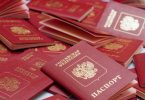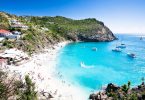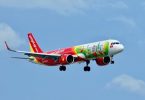Kenya’s capital Nairobi, more recently in the news over the county government’s Easter Egg surprise for returning city residents, has one attribute no other capital can show.
A few miles from the Central Business District and a stone’s throw from some housing developments near the park boundary’s main fence, sprawls the Nairobi National Park over an area of just under 120 square kilometers. Established in 1946 by the then colonial administration, the park has in it 69-year history become a unique attraction for city dwellers and also for foreign visitors who are often astonished to hear, or even see, that within a twenty or thirty minutes’ drive out of Jomo Kenyatta International Airport, they can be inside the park and come face to face with rhinos, lions, giraffes, buffalo, zebras, and a wide range of other game.
The park has also become a symbol for the continued struggle between conservationists and so-called developers, whose legendary greed and readiness to ride roughshod over environment, heritage, and wildlife enclaves has risen to become a global textbook case vis-a-vis the pros and cons of wildlife conservation so close to East Africa’s largest metropolitan area.
Conservationists lost the battle for the routing of the Southern Bypass around the city, which is to divert Mombasa – Rift Valley – hinterland traffic around the city centerand which after protracted arguments in court will now see a section of the park along the boundaries degazetted to allow for the completion of the one missing link to complete the highway ring around Nairobi.
Another battle, though, was recently won when the Chinese contractors of the planned new Standard Gauge Railway got a ministerial gazette notice shoved in their faces after they attempted to destroy the world-renowned African Heritage House. Here, Alan Donovan had preserved, right at the edge of the park, the priceless collections of former Kenyan Vice President Joseph Murungi and his own collection assembled over several decades. The house now is a national heritage site, and winning that battle has injected new hope across the conservation fraternity in Kenya that future battles over attempted encroachment or equally important, to cut off the last remaining migration corridor for game in and out of the park, can also be won.
Pressure is being applied on the Kenyan government to make good for the loss of park land to construct the highway – incidentally an area where many of Kenya’s corporate giants had invested substantial energy and resources in re-forestation by planting tens of thousands of tree seedlings to enhance the buffer zone between the city and the park – and add more land at the other side of the park plus guarantee that the few remaining migration corridors stay open.
After this, some will say there will be an almost inevitable lecture, but now back to the park itself.
Home to over 400 bird species, resident and migratory, the mammal inventory count is nearly 100 species, from the highly-endangered Eastern Black rhino to plains game and predators like lion, leopard, hyenas, smaller cats, foxes, jackals and plenty more.
Varied landscapes from plains to riverine forests, river gorges, ponds, little lakes created by dams, and undulating hills allow the game to thrive and chose where they want to live and certainly provides pasture and water for them even during drought periods. Game drive circuits are well mapped out and signposted, and the regular weekend pilgrimage by city residents driving anything from a custom-built 4×4 Land Rover to a tiny little Toyota Vitz goes to show that, apart from perhaps some sections, literally anyone can come to the park and use their own cars to explore.
Of course, what can be seen from the low position of sitting in a Vitz or found by a driver bare of bush craft is debatable, but then all members of the Kenya Association of Tour Operators, in short KATO, offer tours with either pop-up roof safari vans or open-hatch, purpose-built 4x4s driven by guides who know the park and in either Kiswahili or their native vernacular share game positions when they meet on the tracks.
Nothing though beats the experience I had during my most recent visit to the Nairobi National Park. Met at the gate by Kenya Wildlife Services (KWS) spokesman, Paul Udoto, and accompanied by him to the one and only accommodation facility licensed inside the park, the Nairobi Tented Camp, I got all the explanations and information a visitor can hope for. The meeting with Paul was to also fill me in on upcoming plans by KWS to send a delegation to China to engage with their government and civil society organizations to basically send out a message: “We don’t touch your Pandas, please reciprocate and don’t touch our elephants and wildlife.”
More about that in the near future, as it goes to show that KWS and Kenyan conservation organizations like Dr. Paula Kahumbu’s Wildlife Direct, who more recently held a series of talks and workshops in China, have recognized that nipping demand for ivory in the bud is the key for the survival of the species in Kenya.
There are no elephant in Nairobi National Park though, but as mentioned, nearly 100 other mammal species live there, and Paul was rattling down facts and figures, which, while bouncing up and down in the safari vehicle, was impossible to write down. Apart from welcoming me on behalf of KWS into the park, it was also an opportunity to settle an old open score, and Paul, who himself comes from a media background after working for many years with the Nation Media Group, gracefully accepted my hand of friendship, laughing off past exchanges of words and moving on to a phase of a rather more friendly engagement and cooperation.
Staying at the Nairobi Tented Camp also brought an unexpected windfall as Wausi Walya, Head of PR and Corporate Communications at the Kenya Tourism Board, had taken a group of UK travel writers there for a game drive and a lunch, allowing all of us to share a table and discuss Kenya’s tourism challenges and the need for fair and accurate coverage. We parted company, and the group went off to fly from Wilson Airport to the Masai Mara, knowing that this media trip would generate positive impressions of Kenya and underscore how safe a safari holiday really is.
Talking of safe, the Nairobi Tented Camp, set inside a riverine forest, is entirely open towards the park, with no fence and no ditch, and the nine tents, luxuriously appointed, all have their own little terrace in front where one can sit and look at the forest and towards the river. One morning it appeared, going by the hippo footprints in the rain-soaked path just outside my tent, it was I who was being watched at night. Sightings of lions, buffalo, and, of course, the ever present and often quite mischievous monkeys are common, and yet safe, as the camp staff on arrival gives a detailed brief of the dos and don’ts, and keenly-eyed Masai guards patrol the grounds day and night. And truly is there nothing like hearing nature go to sleep at night, when frogs and toads and crickets and other insects begin their nocturnal serenade supplemented by the “laugh” of hyenas, the snorting of hippos, and the bellowing call of a leopard before making way to the daytime orchestra when the birds wake at dawn and literally sing their heads off. It is such experiences which, after four decades in East Africa, still capture my imagination and have me stand still and listen just as it was during my very first safari.
It was, in fact, the stay at the camp which allowed me to set out on a morning game drive as early as 6 in the morning and capture the waking up of nature, birdsong galore, hippos snorting in the pools after a night out for a long dinner with their friends and family, at least two dozen rhino sightings both closer and further off, and, of course, that meeting with the Lion King. A secretary bird as well as a male ostrich displayed all signs of them seeking a partner with a display of huffing, puffing, and in the case of the ostrich, the pinkish color of neck and legs. Of course, the camp guides like Saruni who drove me, know every nook and cranny of the park and perhaps have the best educated guesses among all safari driver guides taking visitors to the park, simply because they explore the circuits at least twice a day. While visitors from outside the park were still waiting for the gates to open, a stay inside the park allows for greater flexibility and first-come, first-serve with game sightings in the morning and then again the late afternoon when day visitors must leave while camp guests return as dusk settles, often seeing the elusive leopard going on the nightly prowl for prey.
When living in Nairobi, decades ago, I was a regular visitor to the park, and there were no housing estates and commercial facilities coming up right to the boundaries. While this remains a challenge for the conservationists, the park nevertheless constitutes a major tourism attraction, and for those tourists with the right safari operator arranging their itinerary, it will be an arrival they hold in awe forever that an hour after landing at Jomo Kenyatta International Airport they can enter the park through the East Gate, immediately start their safari and stay at a proper tented camp on their first day, setting the tone for the rest of their visit. Wilson Airport is nearby the main gate of the park along Langata Roa,d and being the gateway to the Kenya national parks by air, combines supremely well. An Australian travel agent and her travel agent daughter who stayed at the camp were visibly stunned by their experience of staying in the park and expressed incredulity that truly, an hour after touching down, they were on safari.
Perhaps it will take a concerted effort between the Kenya Tourism Board, the Kenya Wildlife Service, MICE operators, and the city hotels to give the park another promotional push, because no visitor who comes to Nairobi for meetings and conferences should leave for home without having visited this gem. It is this park which makes Kenya’s capital city unique by offering something no other capital can offer, apart perhaps from Victoria in the Seychelles where equally the Morne National Park is only half an hour’s drive away from the airport and the city, but that will make for another story another day.
Today it is all about the Nairobi National Park and the rich wildlife experience visitors will take home with them, especially the ones who opted to spend a night or more
(eTN): Walk on the wild side in the park? Or, a drive more like it! | re-post license | post content





















